Arduino boards are easily programmable microcontrollers capable of supporting a variety of input and output peripherals, both analog and digital, for projects of many shapes and sizes. There are many versions available, with the most famous being the Arduino Uno. This board can have its external capabilities enhanced with the use of shields for things like motor control, Bluetooth, and Wi-Fi. With this controller board and the right combination of external peripherals, projects like an automated watering system can be had at little cost.
Automated watering systems are exactly what the name suggests. Instead of using human intervention to take care of plants or crops, a system that runs on its own is put in place. Such a system monitors data (such as soil moisture) and controls water pumps to deliver a certain amount of water in a timely manner. This is beneficial because it solves the issue of having to manually water plants and can protect them from overwatering.
In this article, we’ll go over 10 projects, which we’ve organized by difficulty, that use Arduinos to help keep your plants green.
Plant Watering System
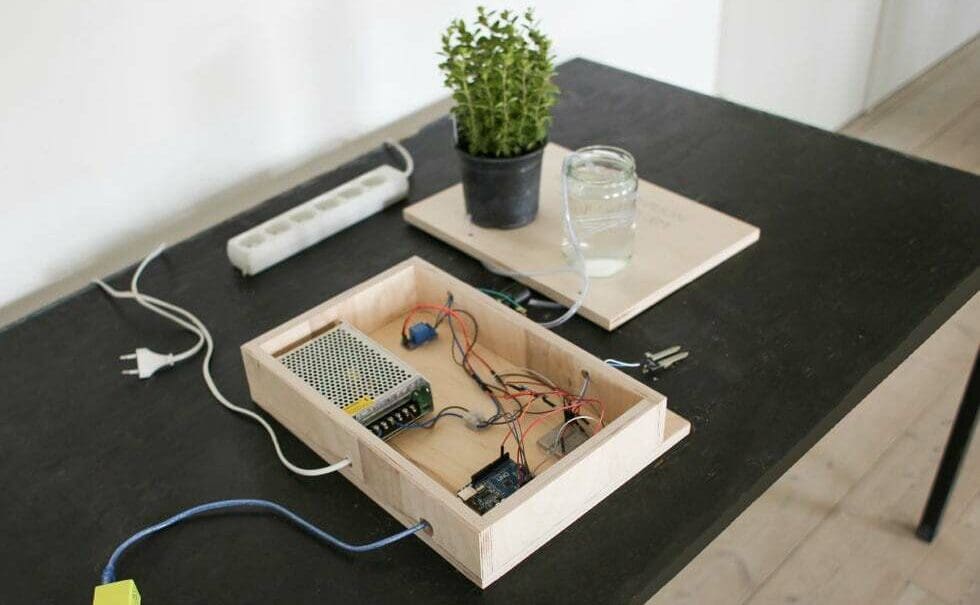
Here’s a simple project that’s great for getting started with ideas that include the Arduino Uno. The creator includes useful and detailed explanations on how the different components are assembled and work together.
It only requires sensors to read the moisture in the plant’s soil and uses drip irrigation when it sees that water is needed. The only downside is that you might have to get a power adapter, which might be a little bulky.
- Difficulty: Beginner
- Designer: benrbill
- Project: Instructables
- Core components: Arduino Uno, moisture sensor, water pump, 12-V power supply
Basic Watering System
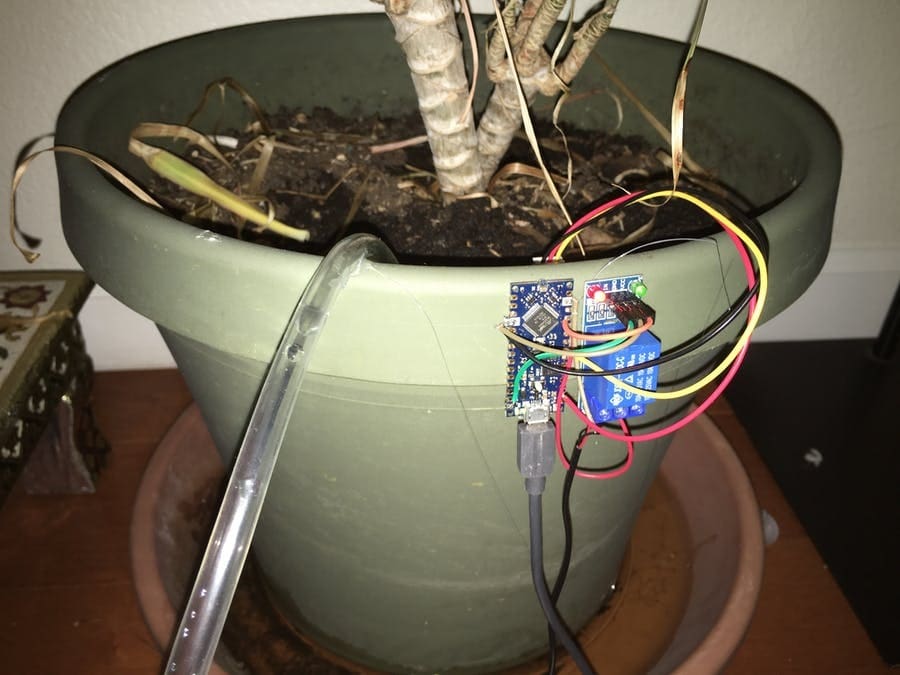
This is also a simple watering project, but it’s also got a smaller footprint. It’s easily reproduceable, no matter what your plant setup looks like.
This project uses the Arduino Nano, a smaller version of the Arduino board, to control a water pump for indoor plants. What’s great about this board choice is that you can easily hide the control system, as well as save time on building.
However, if you already have an Arduino Uno, among the comments and feedback from makers and the creator, it’s suggested that the bigger microcontroller should also work.
Automated Drip Irrigation System
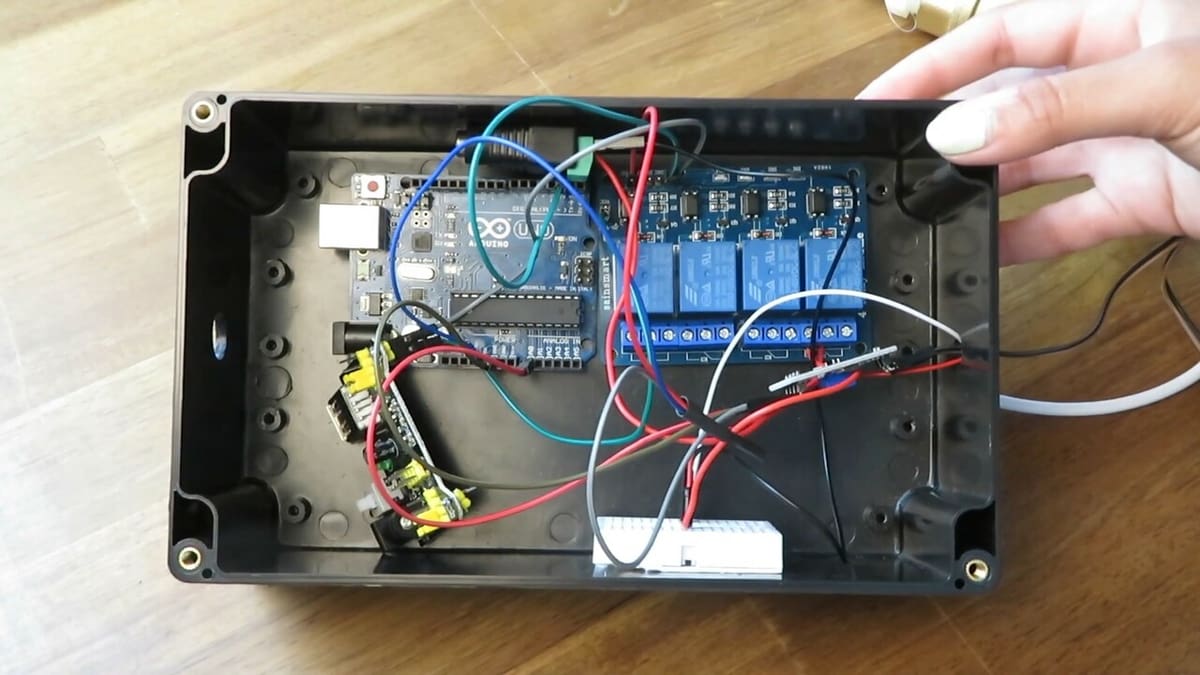
Here is a simple but handy project for your garden, orchard, and backyard.
The inspiration came from Salih Zeki’s Smart Irrigation project, which was successfully adapted to automate irrigation based on soil moisture levels, reducing the need for manual intervention and providing an ideal environment for plant growth.
Everything has been designed to be easy to adapt to individual needs with drip irrigation components. Drip irrigation is often more suitable, as the water usage can be up to 70% more efficient than conventional methods.
The system’s assembly video involves everything from detailed electronics to practical installation in the garden, with components such as valves and drip pipes. Valuable tips include using an electronics box to protect components from the elements and choosing materials carefully to ensure durability. Preliminary testing is also important to ensure proper functioning of the sensors and valve.
- Difficulty: Beginner
- Designer: Srilakshmi Varma
- Project page: Instructables
- Core components: Arduino Uno, 4 channel relay module, 5-V power supply module, soil moisture sensor, motorized ball valve, electronic components, drip irrigation components
IOT Based Fertilizer System
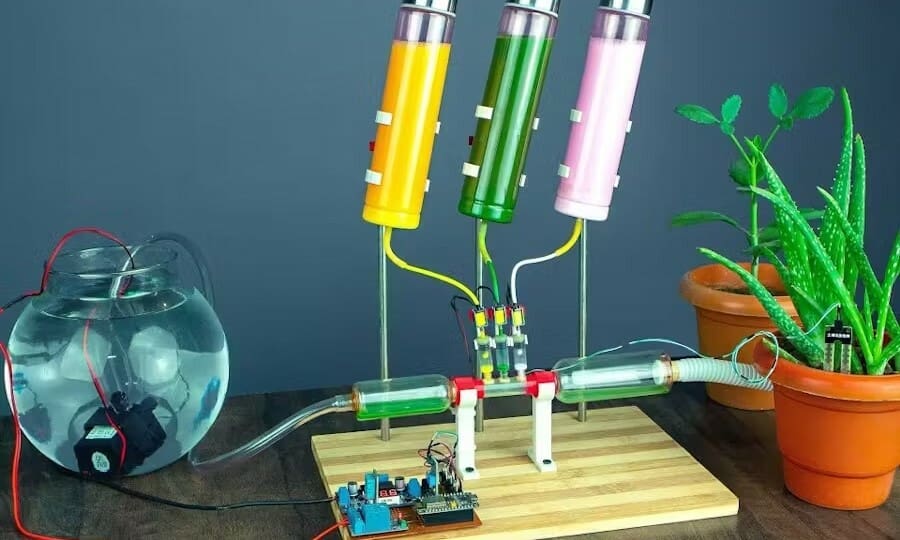
Having a vegetable garden or flowerbed at home is a great way to grow healthy food, but it’s not always an easy task. Many plants depend on additional care and fertilizers. This system offers a helping hand by automating the irrigation and fertilization processes, which makes it easier to keep plants healthy during periods of absence and increases the efficiency of the fertilizer use by ensuring precise distribution of essential nutrients.
Assembly of the system involves using peristaltic pumps for dosing fertilizers, solenoid valves for controlling water flow, and an adjustable DC-DC converter to power the electronic components.
Blynk integration allows users to control the system remotely through iOS and Android devices, making farm management more accessible and efficient. The system can monitor critical data, such as soil moisture, air temperature, and relative humidity, in real time, automatically adjusting irrigation and fertilization as needed. The use of materials such as plastic bottles for mixing tanks and syringes for the fertilizer delivery mechanism demonstrates the feasibility of adapting common components for sustainable purposes.
- Difficulty: Intermediate
- Designer: NextPCB
- Project page: Hackster
- Core components: Arduino Uno, NodeMCU Esp8266, moisture sensor, relay, temperature humidity sensor, water pump
Mini Indoor Watering System
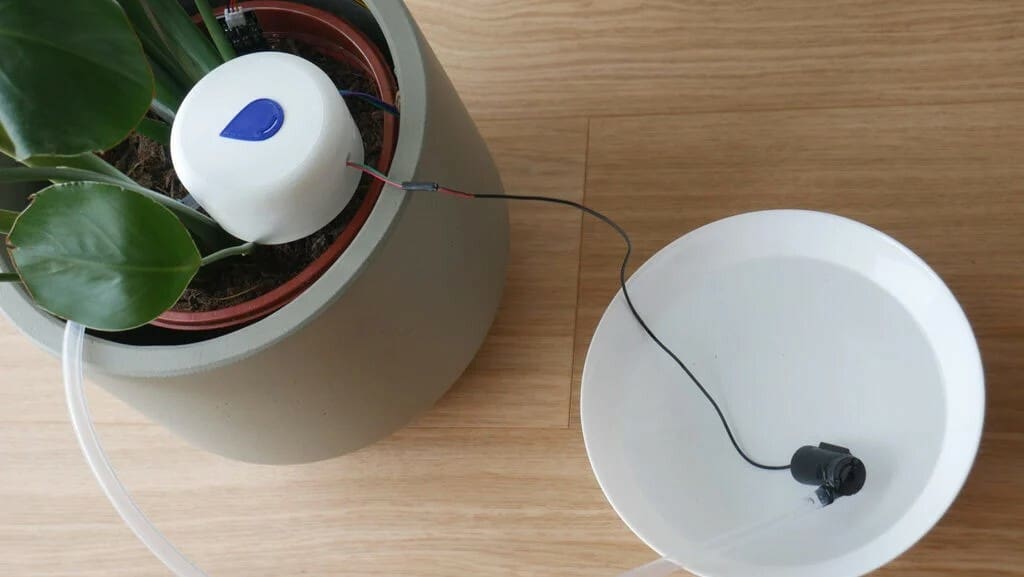
Decorating your house or apartment with plants can completely change the environment, making it more homey and cozy. However, you’ll need to make sure they stay watered when you’re traveling or away. This indoor solution is a small-scale watering system that the designer was inspired to make after creating a larger system for their greenhouse.
The video includes the assembly process for both the larger and smaller systems with all of the construction details. Arduino Cloud is used to manage the programming and monitoring both via desktop and cell phone. The advantage of this device is that it’s connected to the internet, so you can easily monitor data about irrigation and watering levels. The colored LED lights can also be configured to represent a change in the levels or as a nice touch.
As for the 3D printed parts that add some stylish order, if your 3D printing setup is out of order or you don’t have the exact colors or filaments, check out Craftcloud. In just a few clicks, the case will be on its way to being manufactured and then delivered to your doorstep.
- Difficulty: Intermediate
- Designer: NikodemBartnik
- Project page: Thingiverse
- Core components: Arduino MKR1010, mini water pump, LED ring, transistor, 3D printed parts
Herb Box Eco System
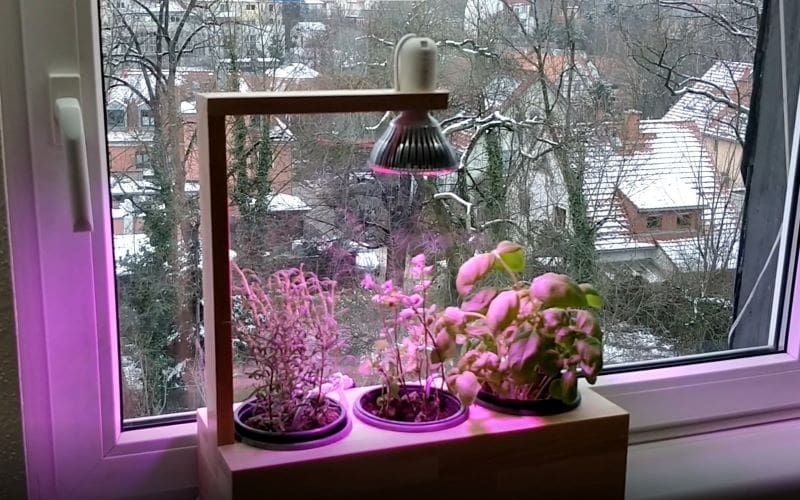
“Hey Alexa, start the watering routine!” With this project, you can have your digital assistant inform you of the state of your herb garden and even control it.
This is a great project that includes Arduino in IoT applications. For this, you might have to do some research on Alexa commands to understand how to apply them not only on this project but also on other future ones.
- Difficulty: Intermediate
- Designer: Walter Heger
- Project page: Hackster
- Core components: Arduino Uno, Amazon Alexa Echo Dot, Esp8266 Esp-01, water pump, growing lamp
Grow It Yourself
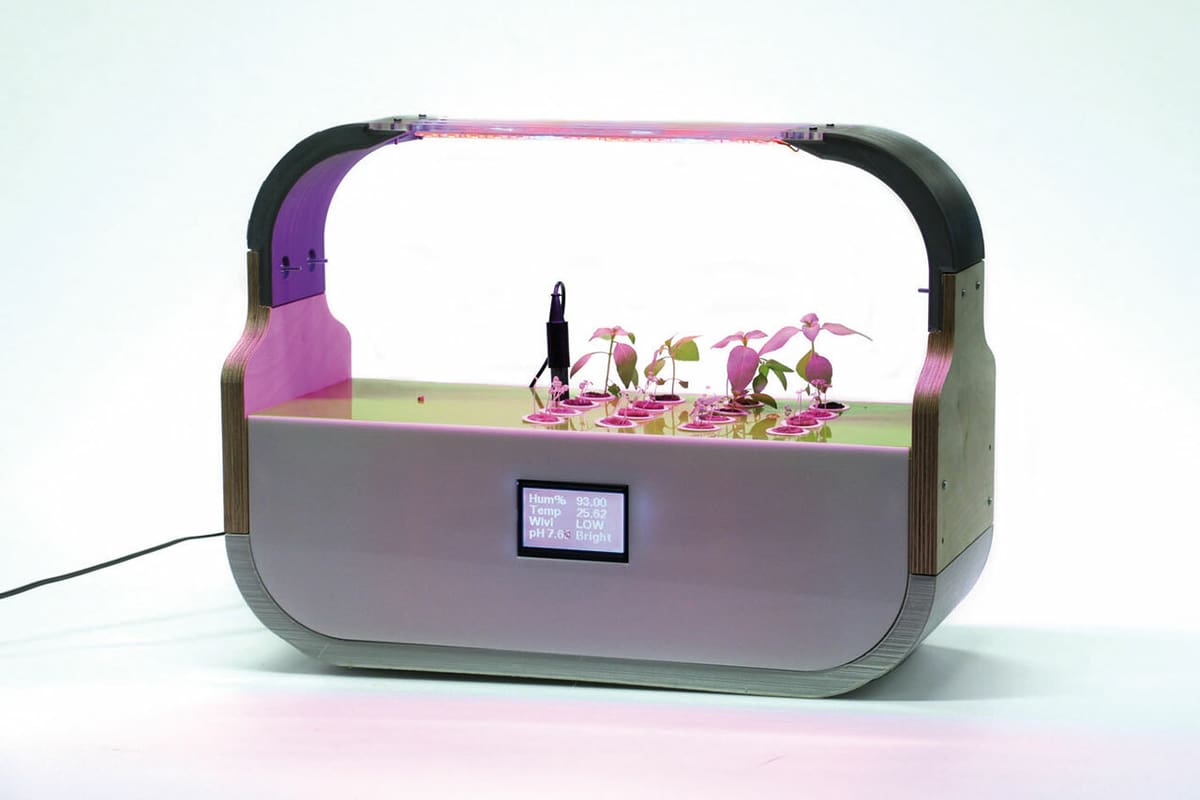
While this project might seem complicated, with a little effort, you get an aesthetically pleasing design. It contains the use of an LCD screen to keep you updated on the state of your plant along with an overhead grow light. It also implements an ultrasonic atomizer for irrigation, using ultrasonic frequencies to turn water into vapor, which then waters the plants via fog dissipation.
The only extra you’ll need is access to a 3D printer to make the enclosure.
This project is a little more involved because it involves creating a custom-built board that uses the Atmega32U4, which is the processor for some boards in the Arduino family.
- Difficulty: Advanced
- Designer: Dmitrii Albot
- Project page: Hackster
- Core components: ATmega32U4, Esp8266 ESP-12E, LCD screen, temperature sensor, humidity sensor, 3D printer
Solar Tracking & Automatic Sprinkler
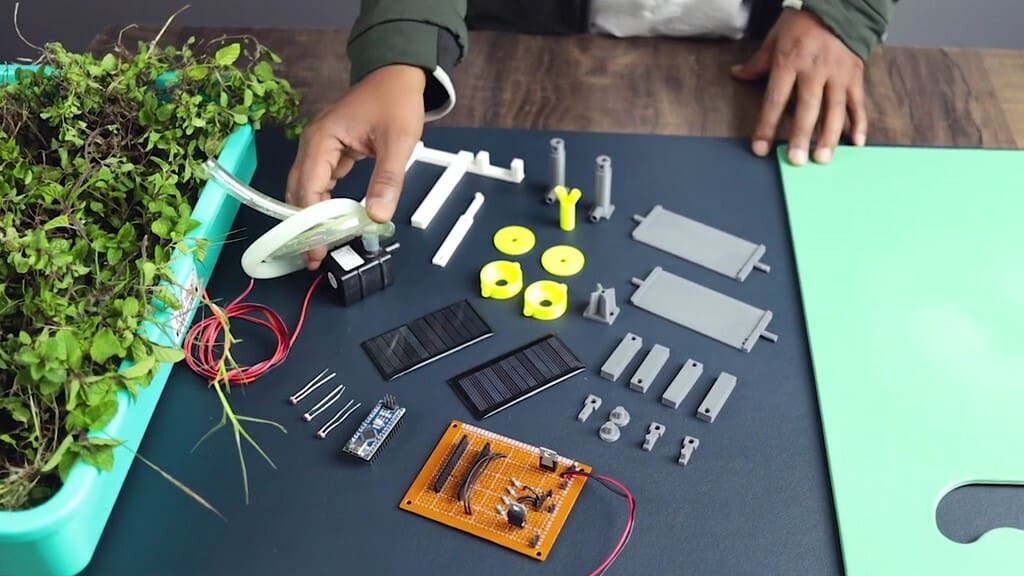
When your irrigation site is far away from a power source, this next project can help solve any issues. This system uses light sensors to orient the solar panels according to the position of the sun, efficiently capturing solar energy. Automatic irrigation is activated as needed, ensuring plants receive enough water without excess waste. A practical example of where this technology can be used is urban gardens or greenhouses.
To make this project yourself, you’ll need to properly calibrate the light sensors and secure moving components to prevent system failures. You’ll use hot glue to fix moving components, avoiding loose connections. Unfortunately, the designer did not make the model files available for 3D printing, but all other details, including the circuit layout Gerber file, are included.
- Difficulty: Advanced
- Designer: Robo Hub
- Project page: Instructables
- Core components: Arduino Nano, 100Ma solar panels, DC water pump, micro servo, LDR sensor, battery, switch
Advanced Water Management (AWM)
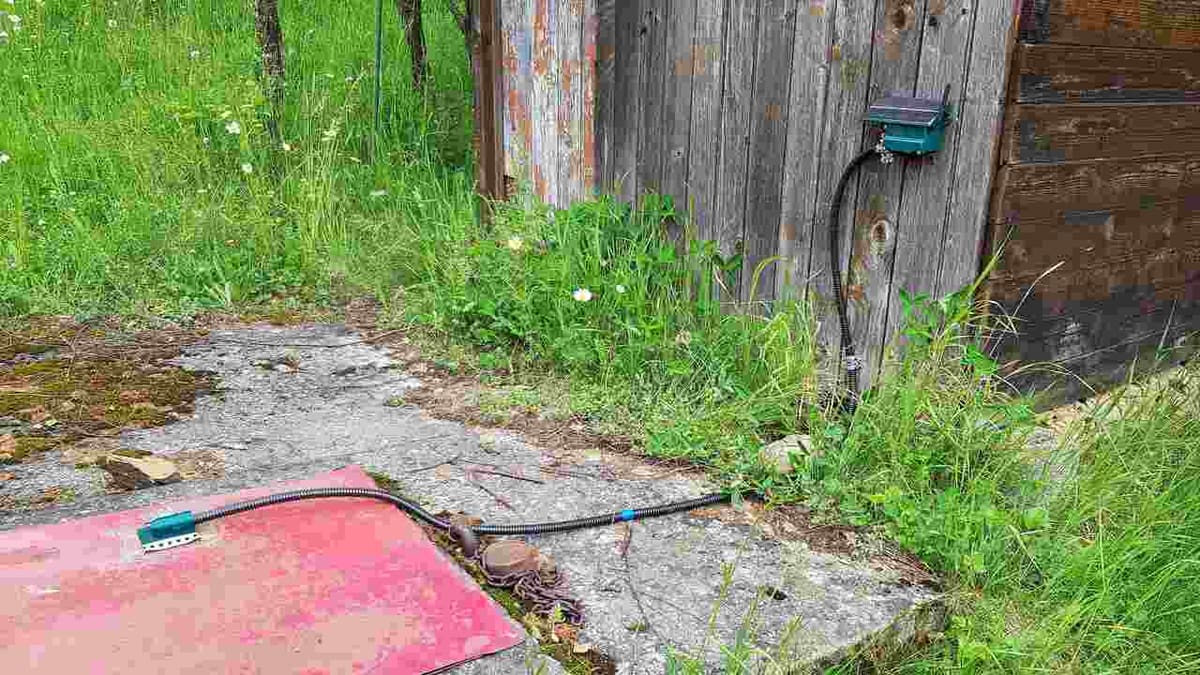
A software engineer specializing in electromobility has developed an advanced water management system (AWM) that promises to make a difference in the water supply of remote communities or difficult-to-access locations. The system automates the monitoring and control of a water pump using affordable electronics and solar energy. The solution was designed for a small community in northern Romania that’s dependent on a natural water source and an additional well.
To replicate this system, the author included a 10-step guide, starting with the preparation of the components and assembly of the printed circuit boards (PCBs). The required code is available on GitHub, and the physical parts were designed in SolidWorks for 3D printing.
Energy management is optimized with sleep modes for the Arduino and the elimination of unnecessary energy consumers. This project not only improves the reliability of the water supply, but also offers a practical and low-cost solution for communities facing similar challenges.
- Difficulty: Advanced
- Designer: Ovidiu
- Project page: Instructables
- Core components: 2x Arduino Nano, solar panel, 20×4 LCD display, ultrasonic sensor, boost converter, relay, radio modules, charging module
Automated Greenhouse
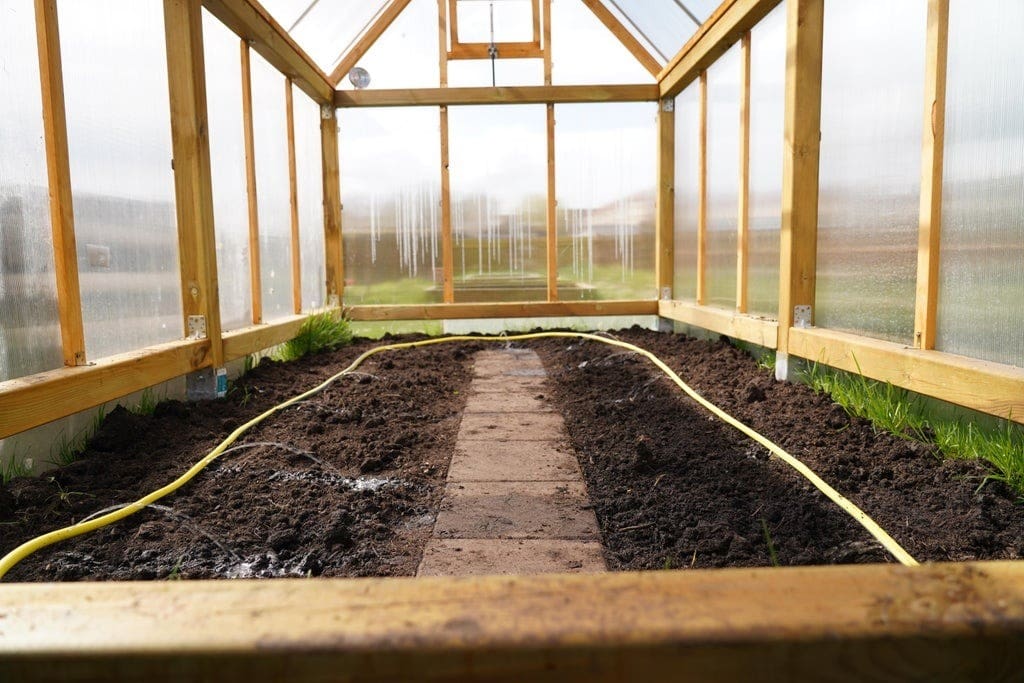
Here’s an idea meant to take the hassle out of operating and maintaining a greenhouse. This project automates monitoring and controlling aspects, such as inside moisture levels, temperature, and watering. This information is then transmitted over radio waves.
You can build the system on top of an existing greenhouse. What’s cool about this project is that it uses a LoRa node to transmit information about the plants. The plants get watered from a solenoid valve connected between a water tank and the greenhouse pipes. The valve is then sent control signals from the Arduino to open and close accordingly as needed.
- Difficulty: Advanced
- Designer: greatscottlab
- Project pages: Instructables, YouTube
- Core components: Arduino Mega 2560, LoRa node module, BME280 sensor, moisture sensor, solar panel, solenoid valve
License: The text of "10 Arduino Watering Systems to Keep Your Plants Alive" by All3DP is licensed under a Creative Commons Attribution 4.0 International License.


